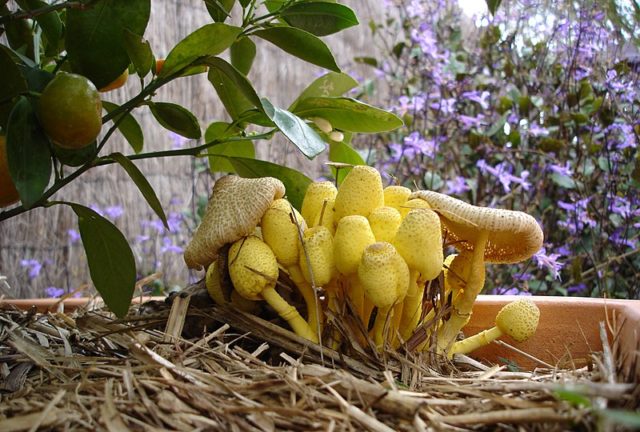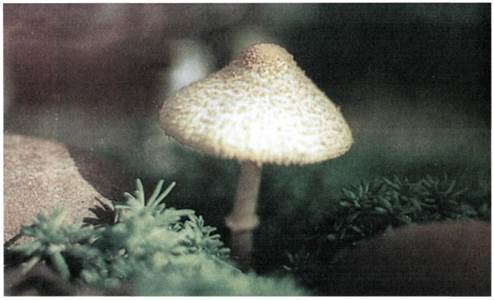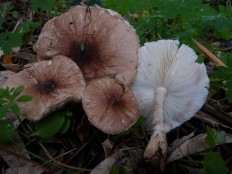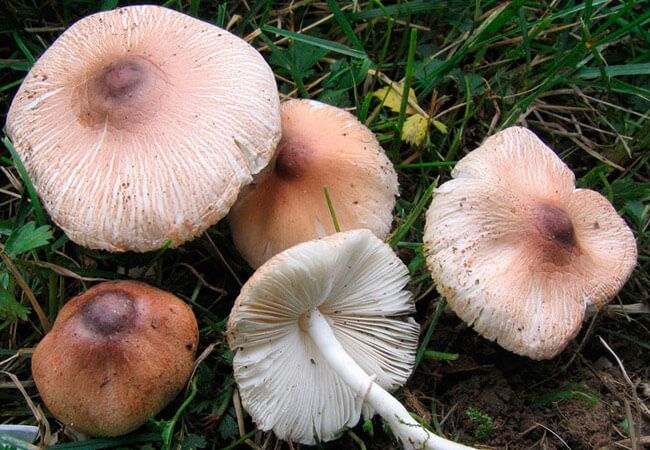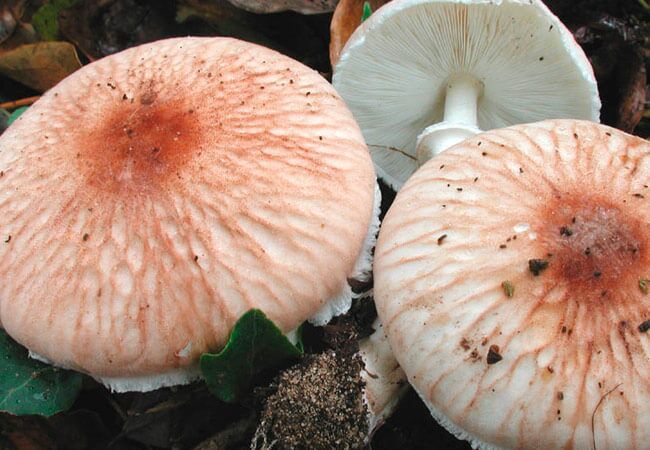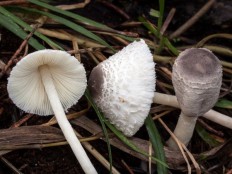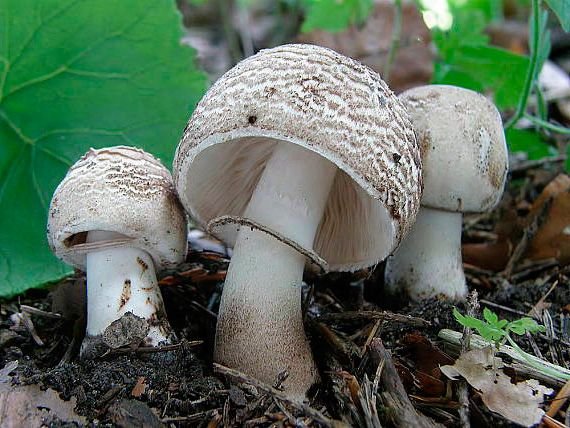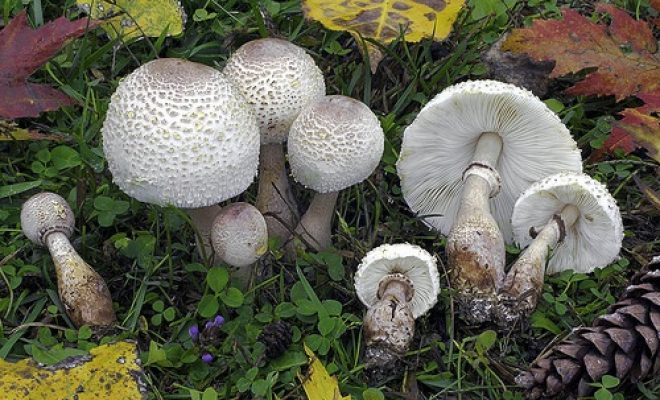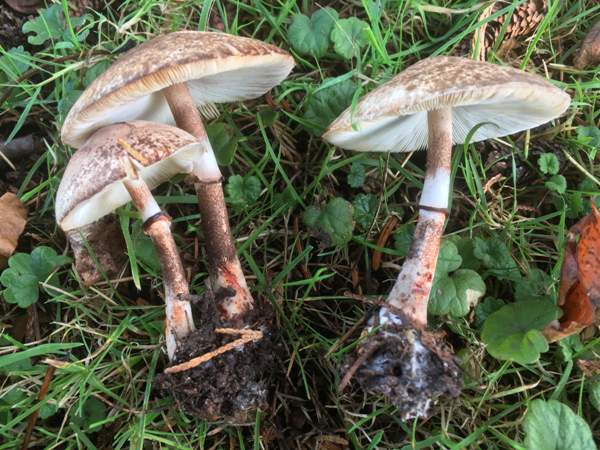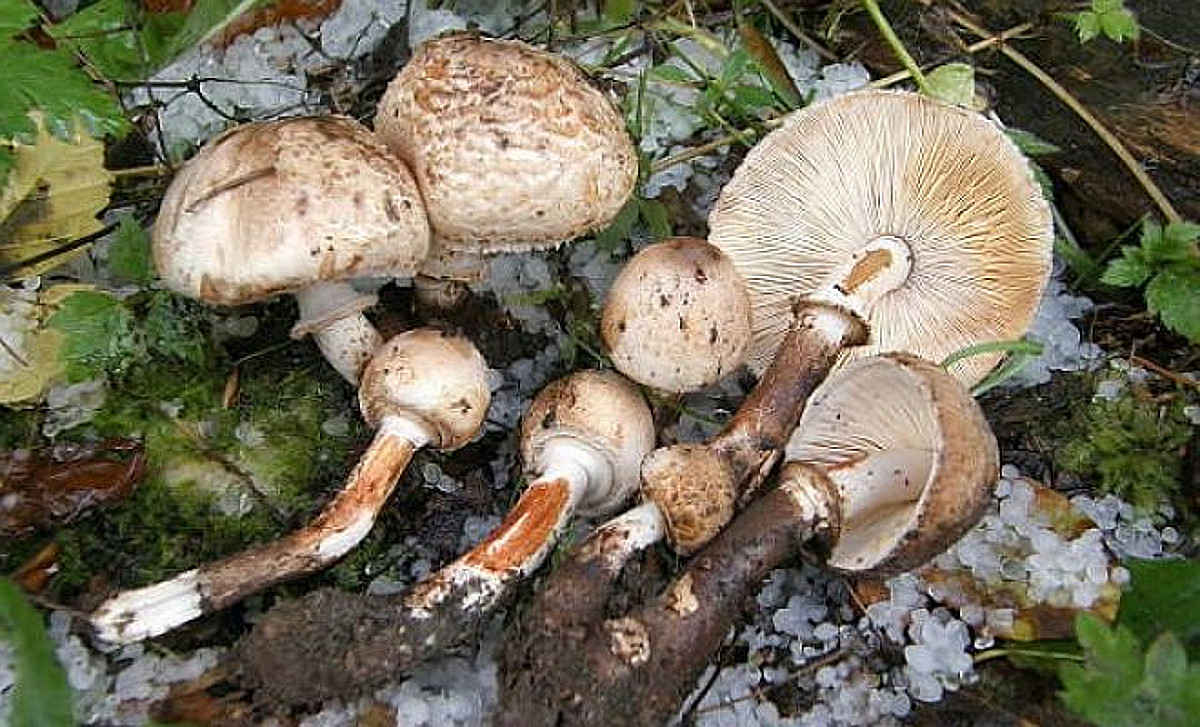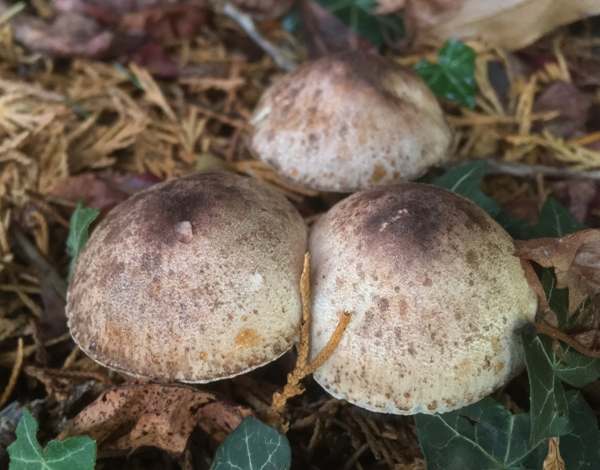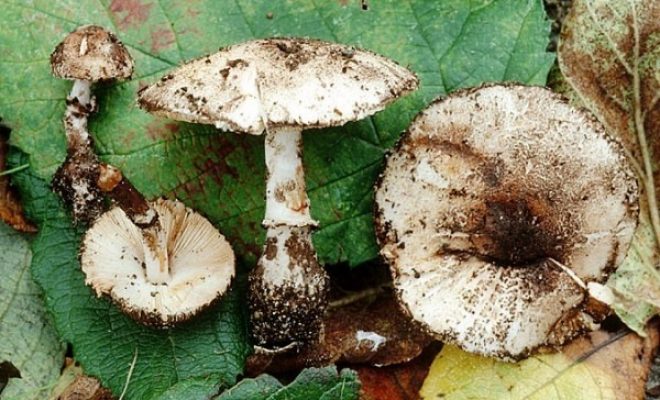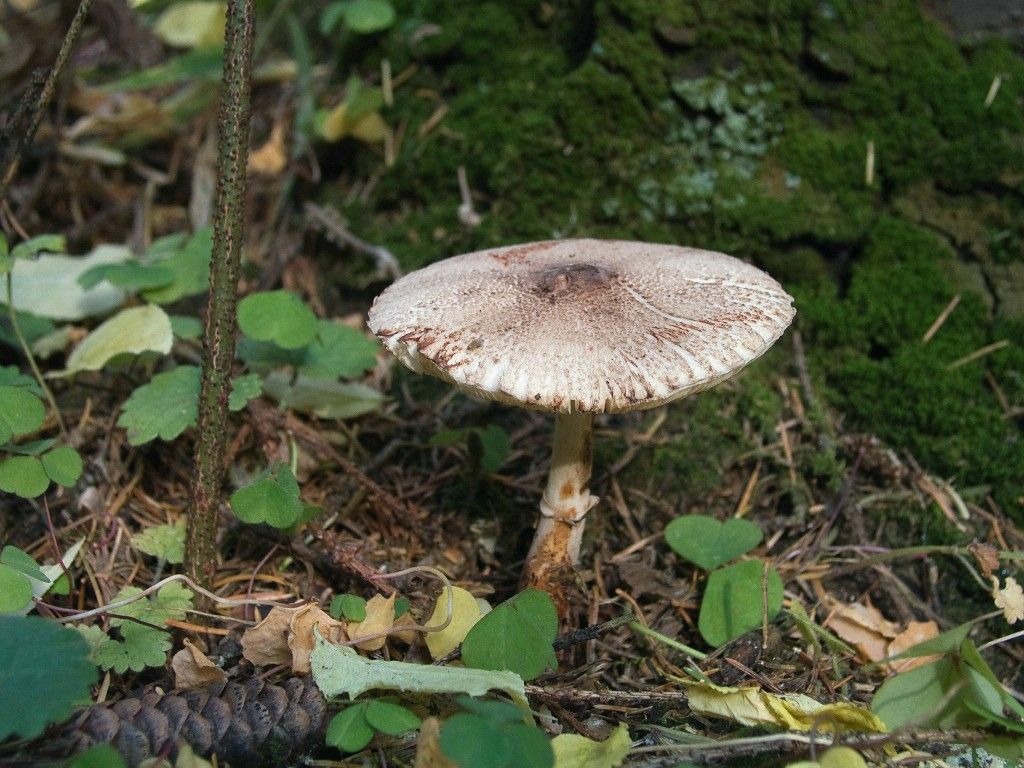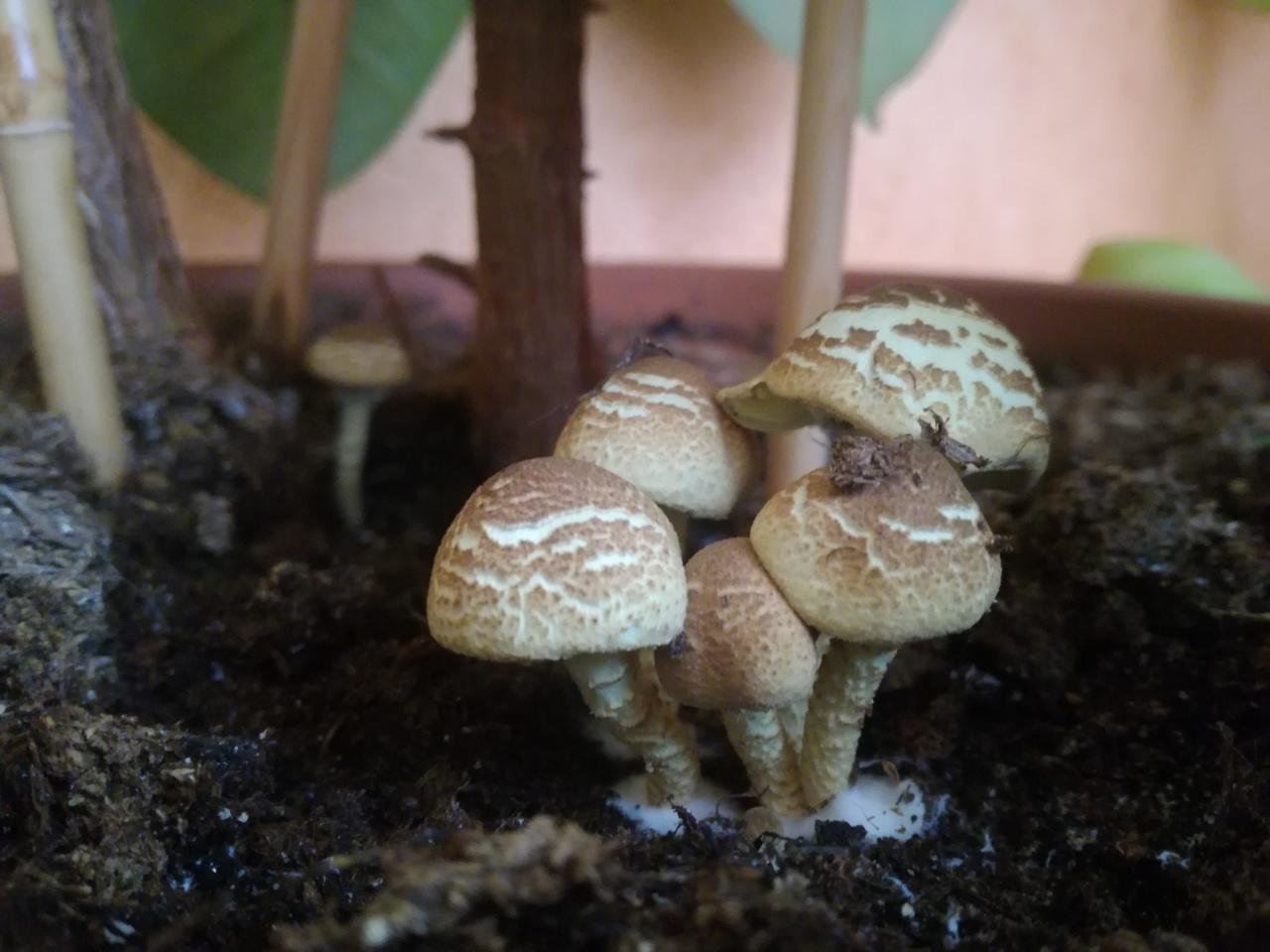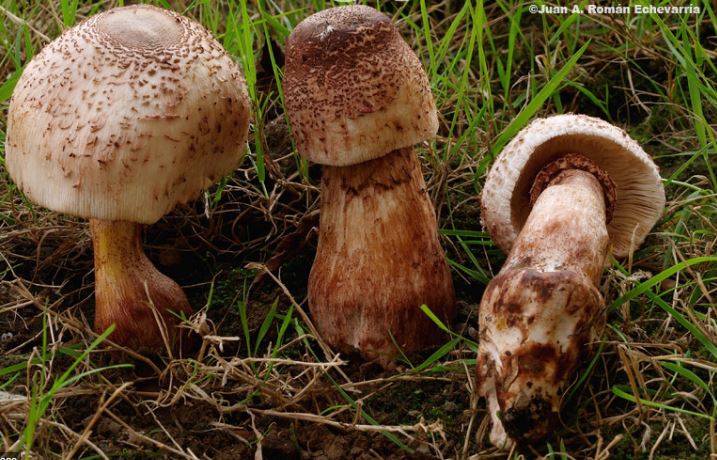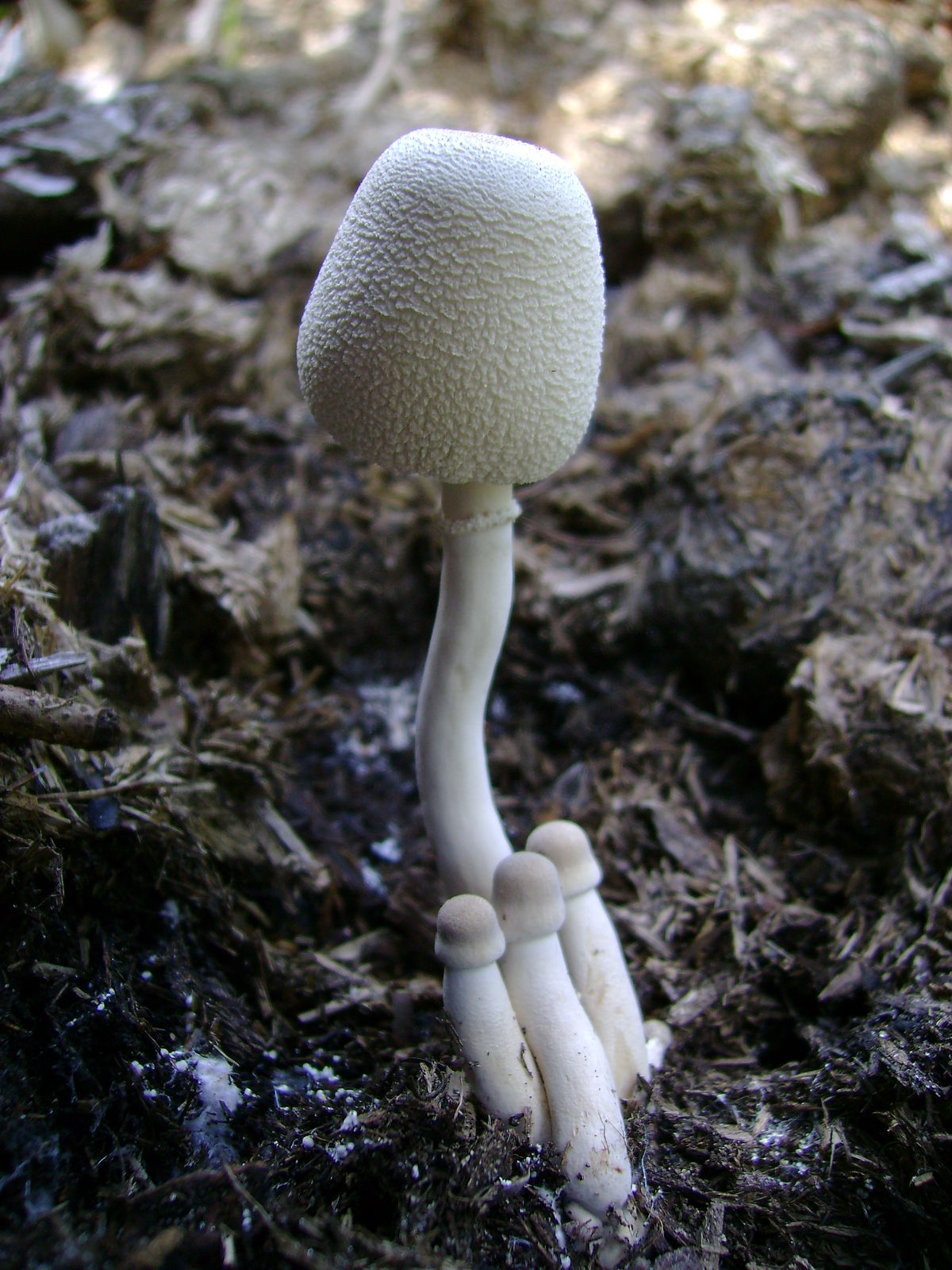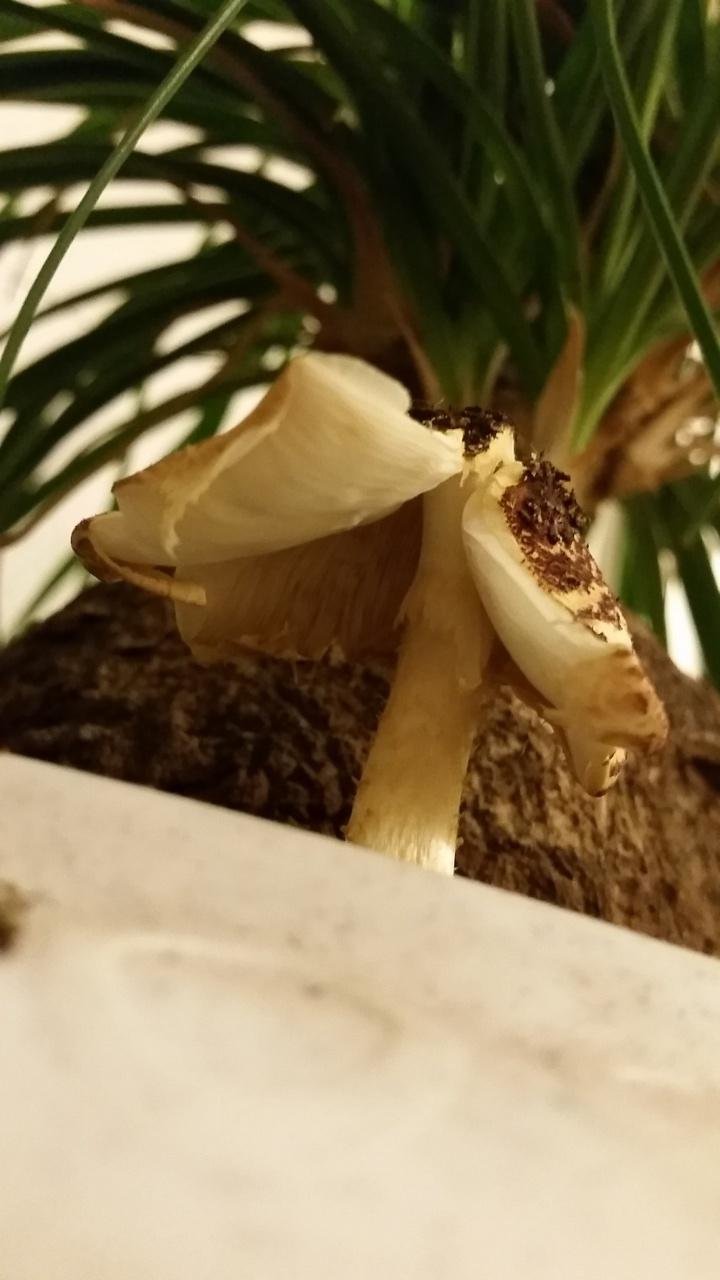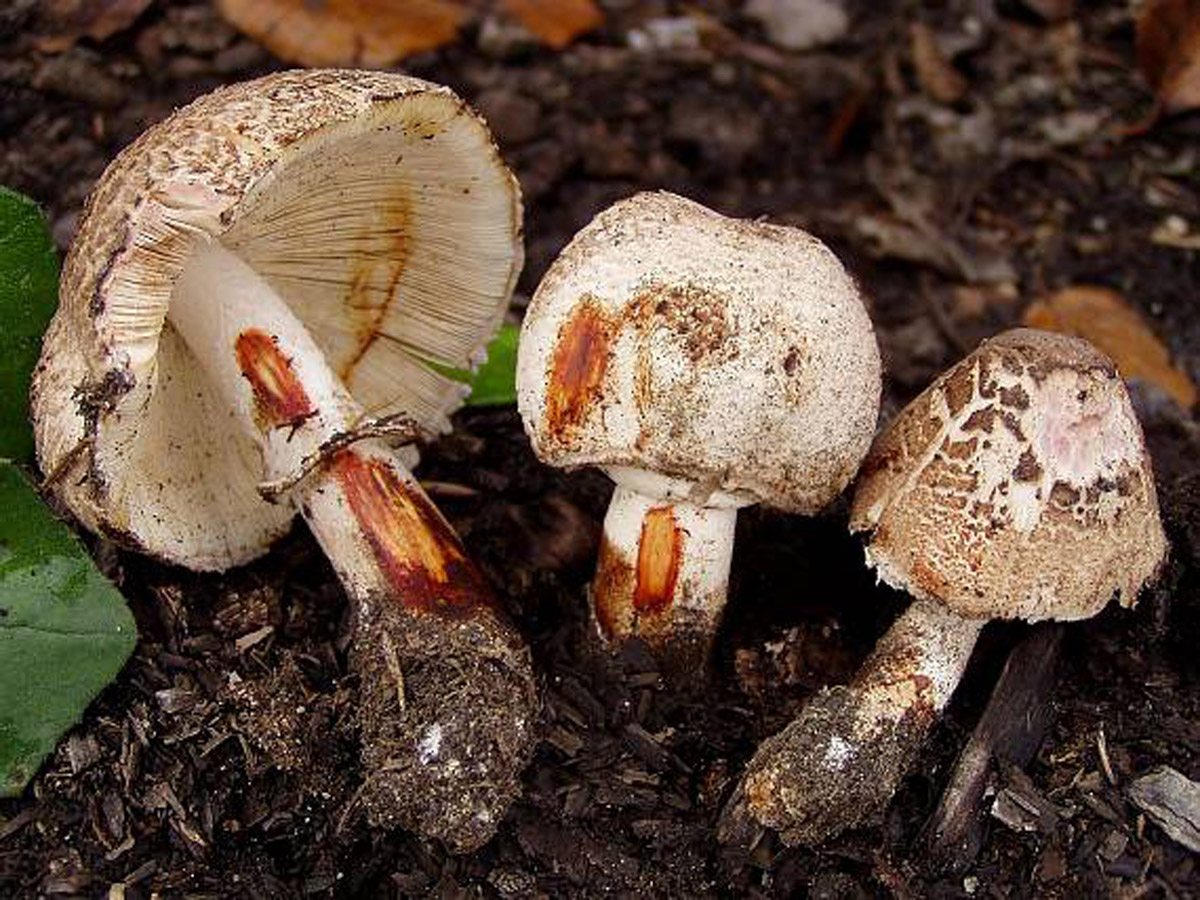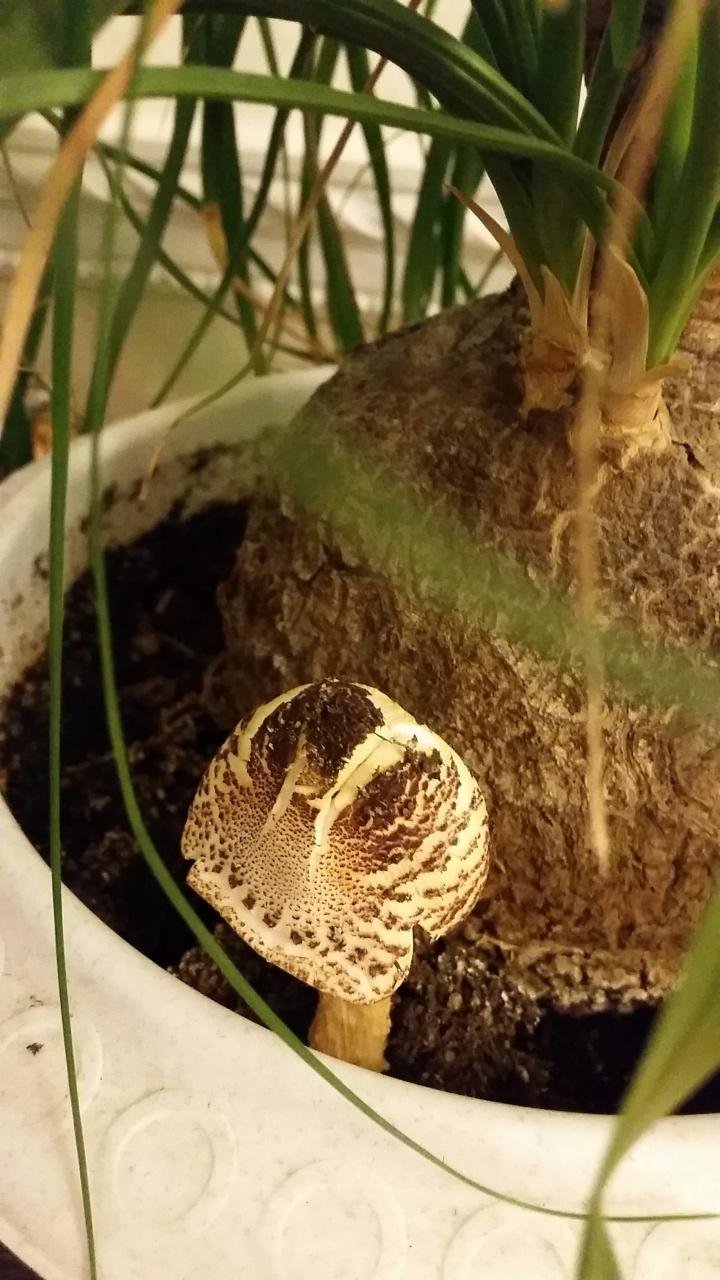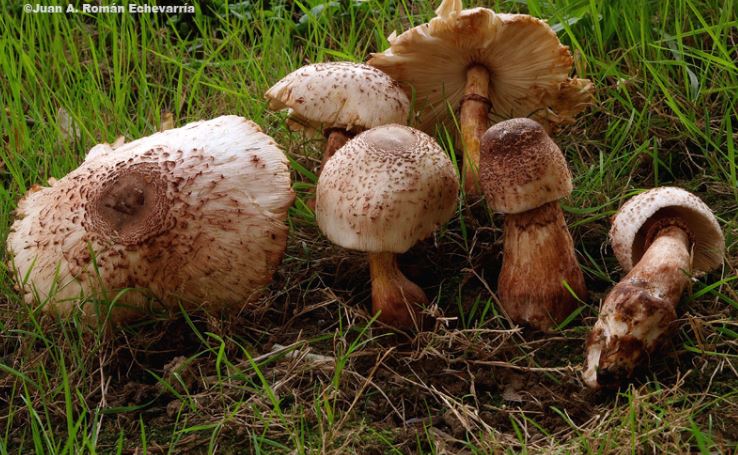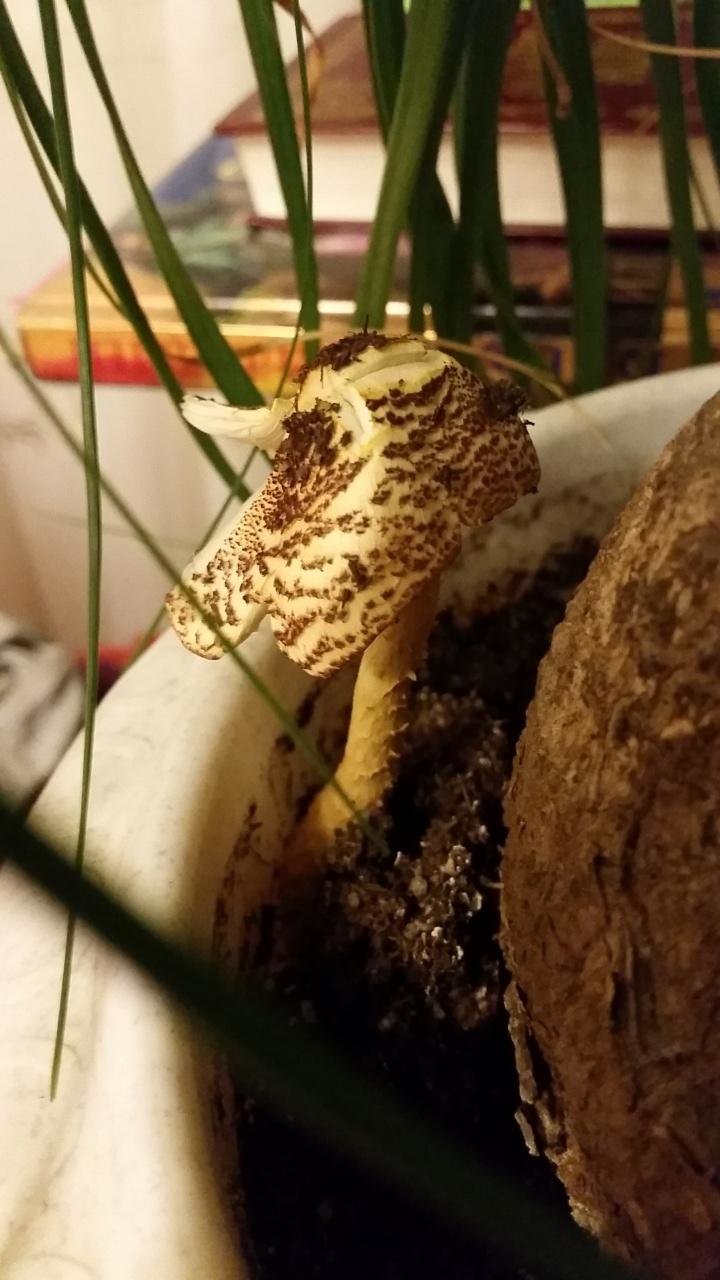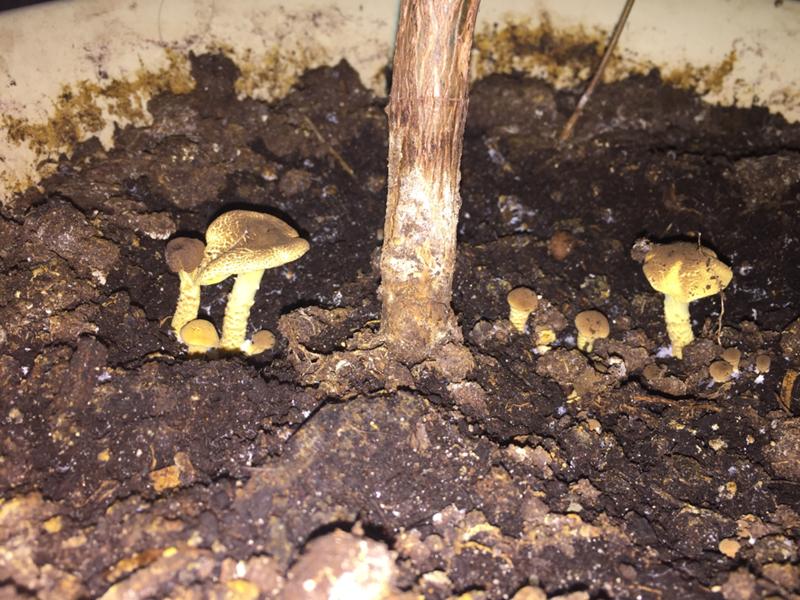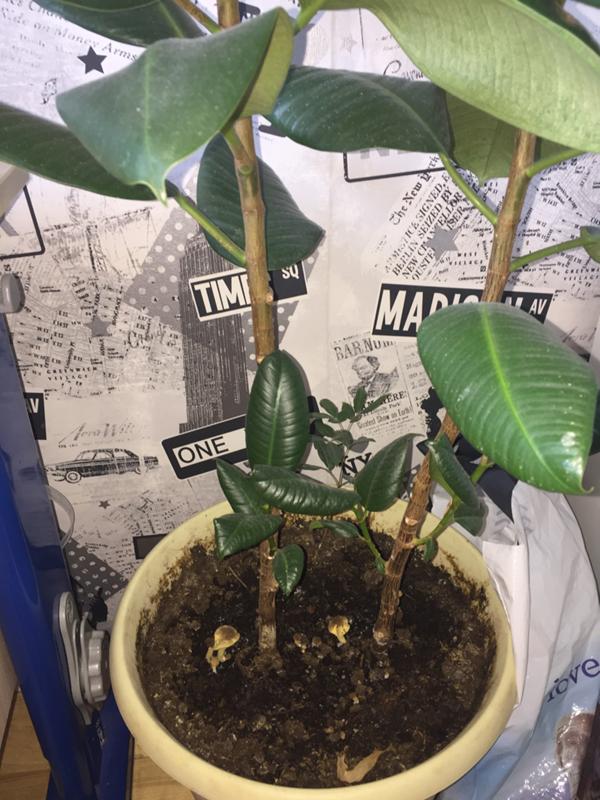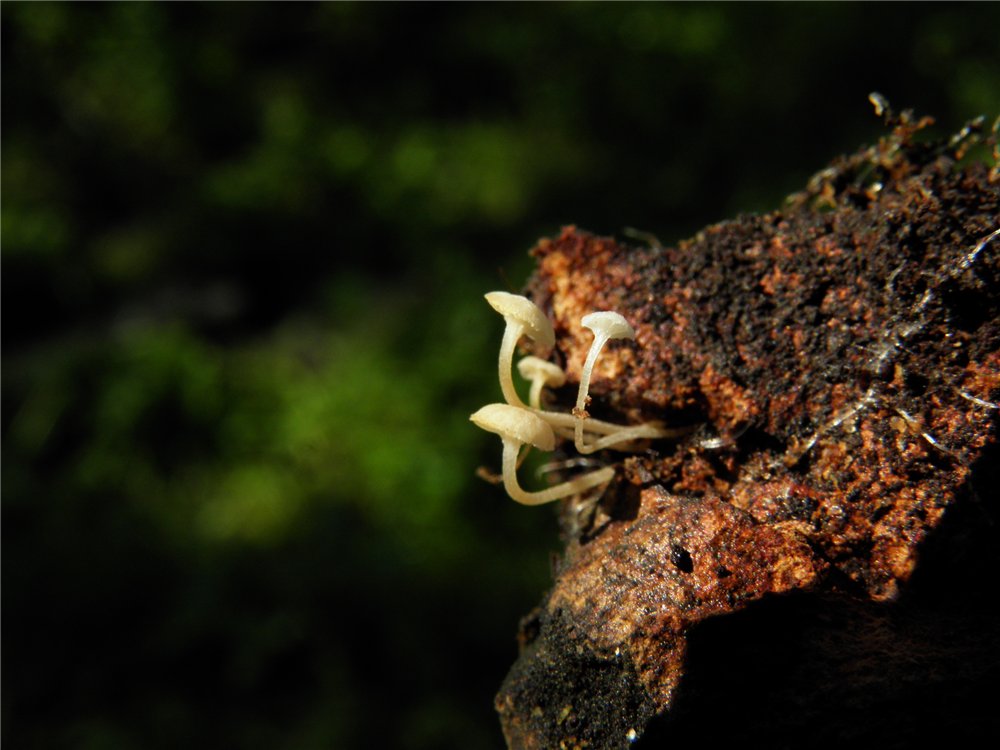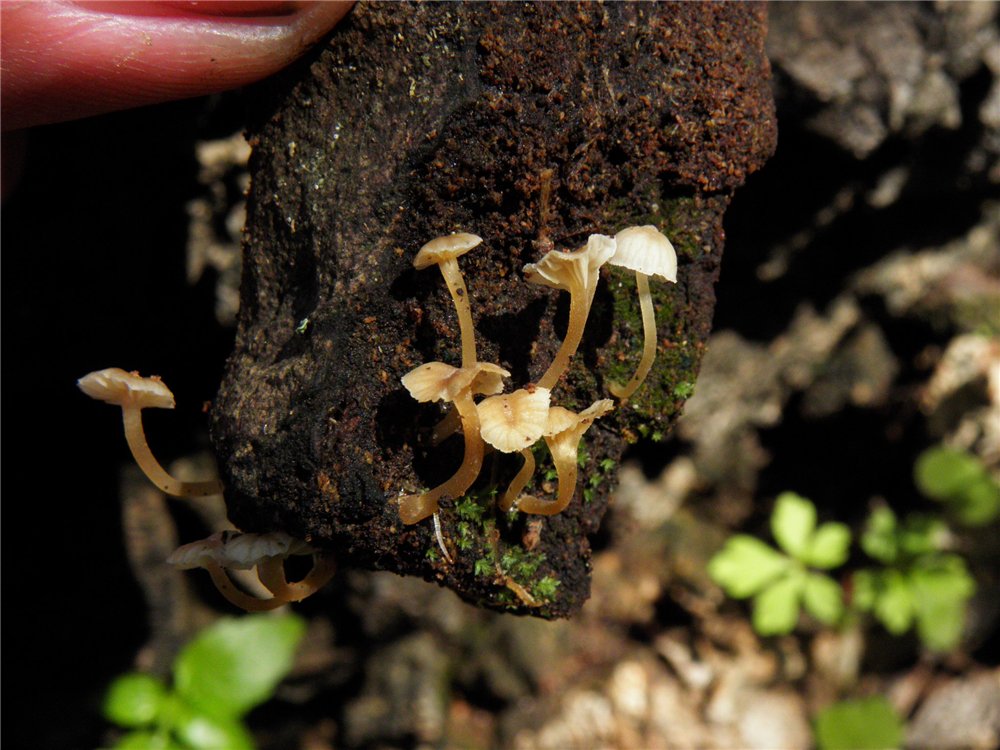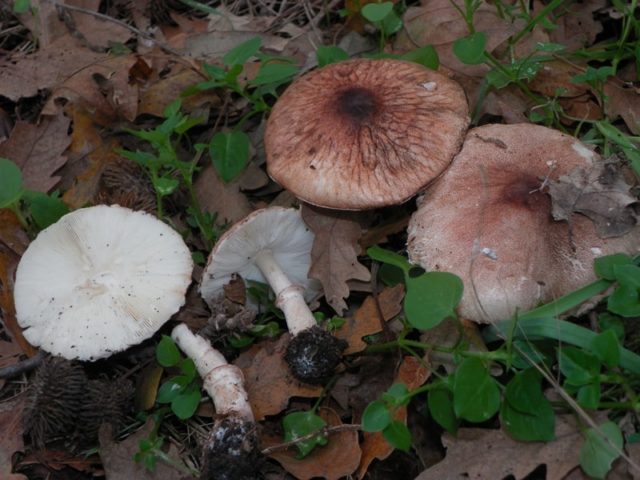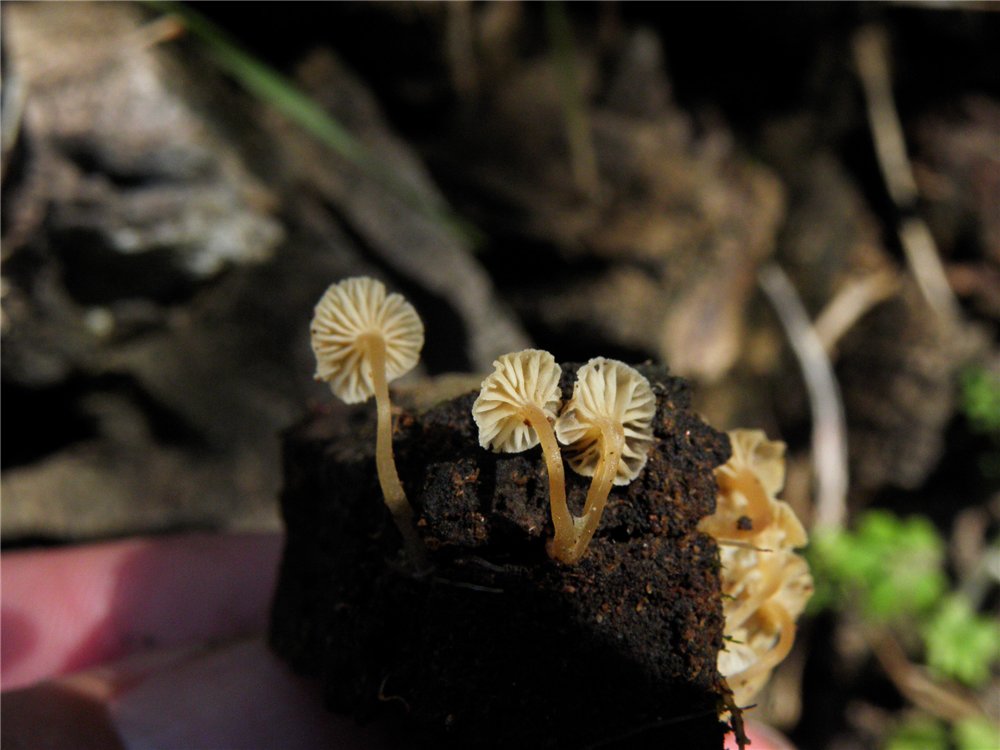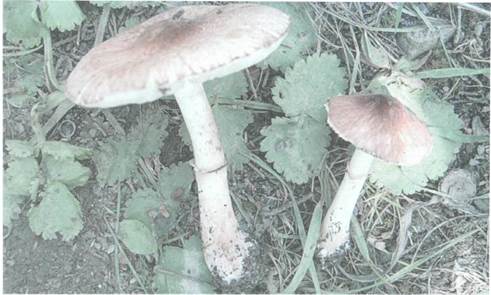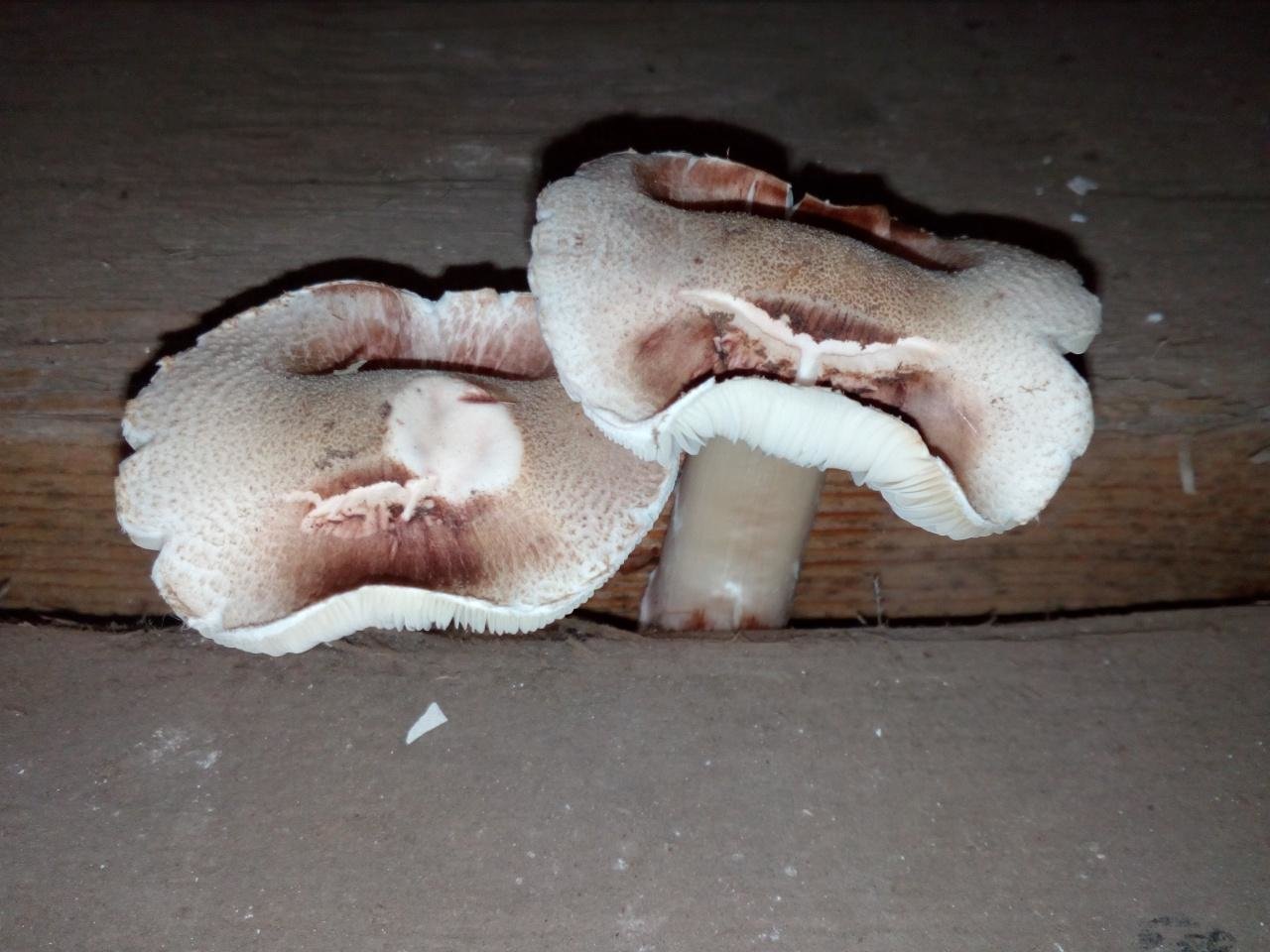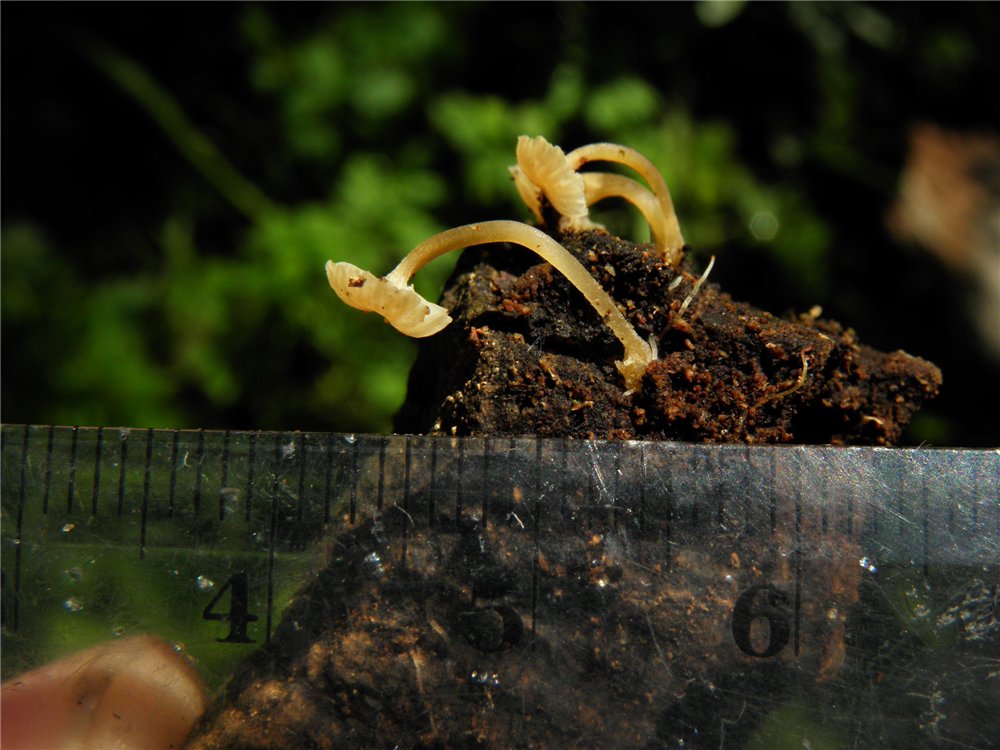Description of Belonavoznik Birnbaum
Birnbaum's hat in diameter is about 1-5 centimeters. The structure of the cap is thin-fleshy. Its shape at a young age is oval or ovoid, soon it becomes conical, even later - bell-shaped, with a small tubercle in the center. The edges of the cap are at first tucked up, and over time they become straight, furrowed. The surface of the cap is dry. The color of the cap is picrine yellow, and the tubercle is yellow. There is a flocculent yellowish bloom on the surface.
The height of the mushroom leg ranges from 4 to 8 centimeters, while the thickness is small - 0.2-0.4 centimeters. The leg is often curved; towards the base it becomes wider, with a small nodule. The leg is hollow inside. The color of the leg, as well as the cap, is picrine yellow. Its surface is bare. A narrow, filmy, yellowish apical ring is located on the pedicle. Below the ring on the leg there is a flocculent coating. Often the ring disappears over time.
The pulp of the mushroom is yellowish; at the break, its color does not change. The pulp does not have a special smell and taste. The plates are thin, loose, often spread out. The color of the plates is sulfur-yellow. Spores are oval-ellipsoidal. The surface of the spores is smooth, colorless.
Places of growth of Birnbaum white-worms
These mushrooms grow in greenhouses, greenhouses, hotbeds. They settle on manured soil. These are very bright and beautiful decorative mushrooms. They bear fruit in greenhouse conditions throughout the year.
Birnbaum's whitehead is an inedible mushroom.
Other Belonavozniki
Pilate's whitehead is an inedible mushroom. It is also called Pilate's white champignon. His cap is at first spherical, but with age it transforms into a convex-outstretched one, while a round small tubercle remains in the center. The diameter of the cap reaches 9 centimeters. Its color is brownish-red, and in the center it is darker. Radial fibers stand out well against the light background of the cap. The leg is located in the center of the cap, in its lower part there is a small tuber. The leg height can reach 12 centimeters, and the thickness does not exceed 1.8 centimeters. The leg has a central ring. The ring is white at the top and reddish-brown at the bottom. The pulp gives off a faint cedar scent.
Pilate's whiteheads are rare mushrooms. They meet in small groups. They grow in parks, gardens and oak groves. There is no information about the edibility of Pilate's white beetle, so they are not recommended for collection.
Belonavoznik Bedham: where it grows and what it looks like
| Name: | Belonavoznik Bedham |
| Latin name: | Leucocoprinus badhamii |
| Type of: | Inedible |
| Synonyms: | Leucobolbitius badhamii, Mastocephalus badhamii. |
| Specifications: | |
| Systematics: |
|
Bedham's wormwood (Leucocoprinus badhami) is a lamellar mushroom from the Champignon family and the genus Belonavoznikov (Leucocoprinus). Its other names:
- leucobolbitius, named by the Danish mycologist and politician Jacob Lange in 1952;
- mastocephalus is the name given to the mushroom by the Italian Giovanni Battarra in 1891.
It was first described and classified in 1888 by Narsis Patouillard, a French pharmacist and mycologist.
Where does Bedham's whitehead grow
The Belonavoznik Bedham is a rare species with an unusually wide range of distribution. In Russia, it can be found in the foothills of the Caucasus, in Udmurtia and Tatarstan, in the southern regions and Primorye.
Feels great in hotbeds and greenhouses, on piles of rotten debris and humus.It is found in deciduous and coniferous forests with an abundance of windbreaks and forest litter, in gardens, parks and in personal plots. Loves wet places, river floodplains, damp ravines and gullies. It settles in small, closely spaced groups, rarely singly. The fruiting period is from August to November, until persistently cold weather.
This type of fruiting bodies loves humus-rich alkaline soils and deposits of plant remains, warmed up due to decay processes
What does Bedham's white hatchback look like?
Only the fruiting bodies that have appeared have ovoid, spherical caps. Growing up, they first expand into a rounded dome, then transform into an umbrella with a noticeable spherical bulge at the top. Adult specimens have a prostrate shape. The edge is thin, often cracks and breaks off. The diameter of the cap is from 2.5-3.5 to 5-7 cm.
The surface is dry, velvety, matte. White, with small, densely appressed scales of a brownish-rusty color, denser at the apex. The color may change to a creamy gray.
The plates of the hymenophore in young specimens are covered with a dense cape, which, with age, remains on the edges of the cap and leg. They are frequent, not accreted, of equal length, distinctly separated from each other. White, creamy pinkish, with age they become saturated red. The spore powder is white, yellowish or creamy, and the pores themselves are colorless.
The stem is straight or slightly curved, thin and long, with a distinct ring closer to the cap. The surface is dry, covered with white down to the ring. Above is unpuffed. The length varies from 3-5 to 8-11 cm, with a diameter of 0.4 to 0.9-1.7 cm. The color is white, above the ring it is brownish-beige.
The pulp is thin, fragile, watery, pure white. Has a mushroom or unpleasant putrefactive smell.
Closer to the root, the leg of the mushroom expands noticeably
Is it possible to eat the Belonavoznik Bedham
The fruit body is an inedible species. There is no exact data on its toxicity, according to some sources it contains substances hazardous to humans.
Conclusion
Bedham's whitehead is a rare, widespread species of lamellar mushrooms. Belongs to the Champignon family and the Belonavoznikov family. Inedible, possibly toxic. It is a saprotroph, settles on rich fertile substrates, in humid lowlands. On the territory of the Russian Federation, it is found in the Rostov Region, in the Stavropol Territory, in Udmurtia and Tatarstan. It can also be found in North America and Europe. The mycelium bears fruit from August to October. Grows in small groups in deciduous and coniferous forests, parks and gardens, on overheated manure.
Lepiota Brebisson (Leucocoprinus brebissonii)
Synonyms:
- Lepiota brebissonii
- Leucocoprinus otsuensis
Photo Credit: Michael Wood
Note: to date, this species has been transferred from the genus Lepiota to the genus Leucocoprinus.
Lepiota brebissonii is a mushroom belonging to the genus Lepiota, which contains many varieties of deadly poisonous mushrooms. Some of the fungi from the genus Lepiota have been little studied, or not studied at all. Lepiota Brebisson is one of them. The species is synonymous with the Latin name Lepiota brebissonii. Experienced mushroom pickers that grow on the territory of Russia are also called silverfish (and regardless of the variety).
Views
- Leucocoprinus badhamii (Berk. & Broome) M.M. Moser, 1943 - Bedham's White House
- Leucocoprinus biornatus (Berk. & Broome) Locq., 1945
- Leucocoprinus birnbaumii (Corda) Singer, 1962 - Birnbaum Belonavoznik
- Leucocoprinus bohusii Wasser, 1975 - Bogusha Belonavoznik
- Leucocoprinus brebissonii (Godey) Locq., 1943
- Leucocoprinus caldariorum D.A. Reid, 1990
- Leucocoprinus canariensis P. Mohr & Dähncke, 2004
- Leucocoprinus cepistipes (Sowerby) Pat., 1889 typus
- Leucocoprinus cretaceus (Bull.) Locq., 1945
- Leucocoprinus cygneus (J.E. Lange) Bon, 1978
- Leucocoprinus discoideus (Beeli) Heinem., 1977
- Leucocoprinus fragilissimus (Berk. & M.A. Curtis) Pat., 1900
- Leucocoprinus gandour Har. & Pat., 1900
- Leucocoprinus heinemannii Migl., 1987
- Leucocoprinus holospilotus (Berk. & Broome) D.A. Reid, 1990
- Leucocoprinus ianthinus (Cooke) P. Mohr, 1994
- Leucocoprinus imerinensis Bouriquet, 1942
- Leucocoprinus magnicystidiosus H.V. Sm. & N.S. Weber, 1982
- Leucocoprinus magnusianus (Henn.) Singer, 1951
- Leucocoprinus medioflavus (Boud.) Bon, 1976
- Leucocoprinus nanianae Bouriquet, 1943
- Leucocoprinus ovatus Raithelh., 2004
- Leucocoprinus straminellus (Bagl.) Narducci & Caroti, 1995
- Leucocoprinus tanetensis Bouriquet, 1943
- Leucocoprinus tenellus (Boud.) Locq., 1943
- Leucocoprinus wynniae (Berk. & Broome) Locq., 1951
- Leucocoprinus zeylanicus (Berk.) Boedijn, 1940
Description [edit]
- The cap is thin-fleshy, brittle, more or less radially furrowed to the edge, fibrous, covered with small scales. The edge of the cap is thin, often cracking, sometimes with noticeable remnants of the veil.
- free, often with colarium, whitish or pale sulfur-yellow, sometimes with damage and becoming reddish-brown with age, with an even edge. The tram of the plates is mixed or correct.
- The stem is thin, central, with a noticeable ring.
- Spore powder of whitish, whitish-cream or whitish-yellowish color. Spores are non-amyloid, colorless, sometimes germinating. Cheilocystids are numerous. Pleurocystids are absent or few in number.
Ecology
They are found in greenhouses, greenhouses, greenhouses, on heaps of garbage, in gardens, parks, in conifers, broad-leaved and mixed plantings.
Cosmopolitans are found on all continents except Antarctica.



